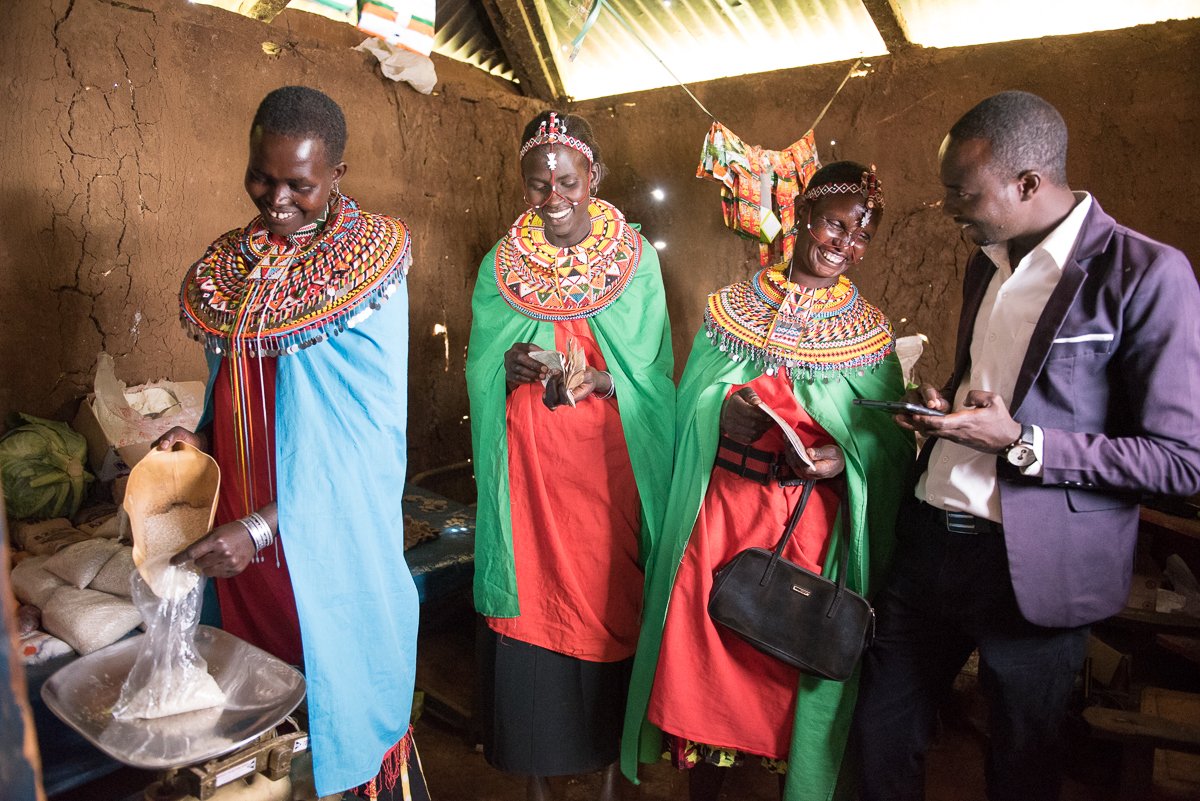Lessons Distilled from Our October Webinar
Photo credit: The BOMA Project
Climate solutions created by frontline communities work better, cost less, and are the only way to respect the human rights of the people most affected by climate-related challenges. One of CJRF’s goals is to ensure that everyone, no matter their identity, has a voice and a role in addressing the climate crisis, and is able to contribute to and benefit from climate action in their communities.
On October 20, 2021, CJRF hosted the first webinar in a three-part series on how aspects of identity link to climate justice and resilience. Webinar participants head from a panel of CJRF grant partners and used breakout discussions to explore how gender plays into people’s abilities to thrive in a warming climate.
The three panelists for the event were:
Sam Owilly, Country Director, Kenya, of The BOMA Project
Lori Tagoona, Senior Associate, Inuit Nunangat, at MakeWay Foundation
Angela Sanau, Gender and Youth Officer at the Maasai Mara Wildlife Conservancies Association (MMWCA)
Heather McGray, the director of CJRF, moderated the panel conversation. CJRF followed the panel discussion with small group chats, allowing fellow partners to connect and further share their experiences with one another. Below we offer a few key insights:
Gender approaches need to fit their local context
MakeWay Foundation supports Indigenous ways of being and knowing in their local context – the Canadian Artic. Lori Tagoona shared that while many organizations focus efforts on women and girls, MakeWay’s gender analysis showed that within the context of Canada’s Arctic, men and boys – who traditionally held roles as hunters and harvesters – are underserved and underrepresented in education and within the workforce.
“The ways our societies and economies are set up don’t honor the skills and experience of hunters. It doesn’t reward or recognize their contributions to the community,” Tagoona shared. “Rather than growing up to become hunters, men will find work with extractive industries like gold and iron ore mines as a means of providing for their families.”
As an alternative, MakeWay is supporting hunters and harvesters to be monitors and stewards, stating that those closest to the land are best positioned to protect it. They funded a pilot project in Clyde River, Nunavut, where the Ilisaqsivik Society supported an expert hunter to earn a full-time salary and keep a daily diary of documented activities, travel routes, harvest yields, and food sharing. The project demonstrated the value of ongoing environmental observation and the role of hunters as keepers of traditional knowledge of the land and natural resources.
The idea of localizing gender approaches also emerged throughout the breakout sessions. Aminul Hoque from COAST in Bangladesh stated that the best approaches depend on the specific problem and context.
“In poor and vulnerable countries, problems are multisectoral,” Hoque said. “Women and children in poor countries face lack of education, and social norms hinder their development. We think that education is the key issue to address multisectoral problems. Education will empower women to analyze their context and make better decisions to solve their problems.”
Alex Heath of Global Greengrants Fund also emphasized this point stating, “Gender equality looks different in different places. It’s up to us to continue the conversation and dig more deeply.”
Women’s economic empowerment is critical in building resilience – but not enough
In the panel discussion, Sam Owilly described the work of the BOMA Project, which the elimination of poverty and women’s empowerment in traditionally patriarchal pastoralist communities of Kenya. Whenever they start work with a new community, BOMA conducts a gender analysis layered with a climate-vulnerability analysis to highlight the best entry point for programs to have the most impact for women in a changing climate. BOMA helps women develop savings to address recurrent shocks, access incomes for the household sustenance, and diversify incomes.
However, BOMA recognizes that economic empowerment alone is not enough. They also work with women to build their voice and agency to participate in critical decisions in their communities and local governments, champion efforts for increased financing for local solutions, and participate in the management of natural resources.
“We recognize that women can hold transformational roles in their communities,” Owilly said. “Once women can build some stability for their families, they can take advantage of this stability to meaningfully engage in climate justice activities.”
Gender approaches must engage the whole community
Angela Sanau, who is also based in Kenya, shared that women and girls are traditionally excluded from restoration and conservation activities – out of 15,000 landowners within the MMWCA, less than 1% are women. Moreover, out of the 2,000 people employed in the conservancies and protected areas in this region, less than 1% are women.
Organizations can have powerful impact if they understand and work within the existing cultural structure of a community. For MMWCA, this means utilizing a whole community approach, including efforts to gain the support of men, so systemic change can happen.
“Our end goal is to empower women and empower youth, but we recognize very well that this won’t happen in a vacuum. It’s very important to work with male decision makers on some of these things,” Sanau shared.
Breakout discussions also highlighted the importance of working with decision-makers and the community as a whole. One participant noted, “When you have intentional targets for vulnerable populations, then it creates some tensions. For example, men feel left out and also want to benefit. There needs to be a delicate balance between inclusivity, but also recognizing the differing vulnerabilities.”
To hear more insights from our panelists, watch the full discussion on YouTube.
Stay tuned for insights from the next webinar in our identity series on youth and climate resilience.

